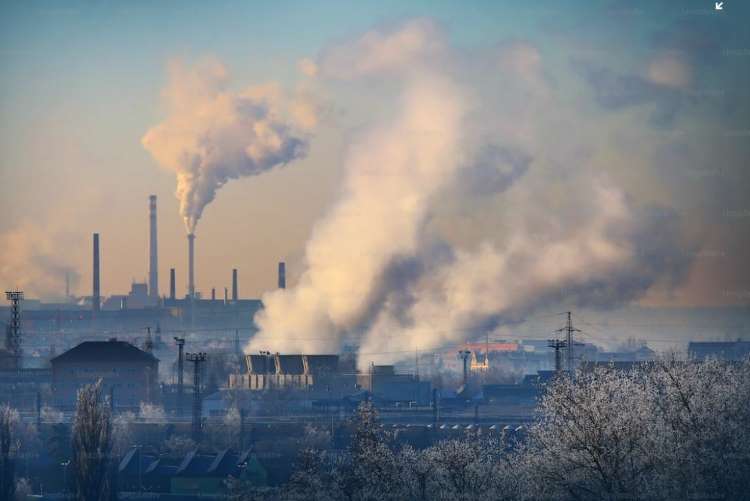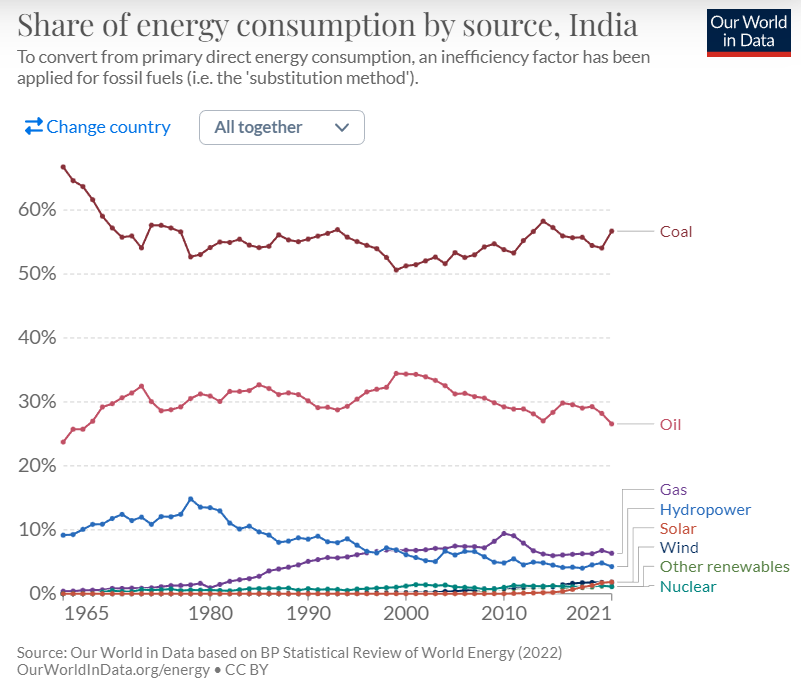
India’s coal energy dependence: As India steps up efforts to reduce its greenhouse gas emissions, leaders of the coal and energy industries have raised concerns. They say, it is time to prioritise the country’s economic development aspirations while addressing gas emissions. It is not feasible to limit coal dependence in the short term, they say.
During the third meeting of the Energy Transition Working Group under India’s G20 Presidency held last week, discussions took place on the concept of just transition (JT) to determine the country’s pathway for a sustainable energy transition. However, national miner Coal India (CIL) and the country’s largest power generator NTPC stressed that coal will continue to play a significant role.
READ | G7 Summit: India pitches for global stability, economic security
Alok Kumar, secretary at the ministry of power, says coal will remain important in India’s energy mix for the next one or two decades because of the country’s abundant coal reserves and its reliable supply. While New Delhi has been advocating for a transition to clean energy, coal still plays a central role in the growth of renewable energy (RE). India will rely on coal until the cost of energy storage decreases.
Currently, coal accounts for approximately 70% of the country’s electricity generation, making it the largest single source of power. According to the government statistics, coal production in India during 2022-23 reached 893.08 million tonne, showing a growth rate of 14.76%.

India is one of the world’s largest consumers and producers of coal, making it a cheaper and reliable solution to the country’s ever-growing energy needs. Despite global efforts to shift towards cleaner and renewable energy sources, India’s heavy reliance on coal continues. The rapid increase in India’s energy demand is also a major factor contributing to its inability to reduce coal usage.
Gurdeep Singh, Chairman and Managing Director of NTPC, emphasise the rising energy needs, saying that coal consumption cannot be downsized as long as the energy demand continues to rise. Reducing coal usage can only be considered when a viable sustainable model is in place.
While formulating policies, there is always a constant struggle between environmental concerns and economic needs. The case of coal usage is no different. While it is evident that coal usage must be reduced as India faces the threat of climate catastrophes, it cannot be ignored that coal is currently a necessary evil.
Advocates of coal usage, including the power secretary, argue that India is already close to achieving its emission reduction target, seven years ahead of schedule, making coal a viable option for the country. Although the share of coal in the power generation mix will gradually decline, it should not come at the expense of economic development, says the power secretary.
While emissions may increase, so will the efforts towards energy transition. Coal usage must be reduced in the long term as renewable energy becomes cheaper in the coming years, while the cost of fossil fuels rises. The government should focus on reducing fossil fuel imports and establishing long-term energy security.
Simply advocating for the cessation of coal usage without considering its implications is also problematic. For example, closing mines to promote energy transition must take into account the resulting economic costs to coal-producing states, as emphasized by CIL Chairman and MD Pramod Agrawal. The coal sector provides revenue to several states and contributes 400 rupees per tonne to GST compensation.
The challenge lies in assessing and supporting the population that is socioeconomically dependent, directly or indirectly, on mines and related activities. Millions of people depend on coal for their livelihoods, and the government will need to identify alternative sources of employment for them once coal mines or thermal power plants are closed. As evident, finding the right policy for the greater good of the larger population is currently not within sight.
From coal energy to clean energy
India has made significant progress in increasing its renewable energy capacity, particularly in solar and wind. However, the intermittent nature of these sources and the associated challenges of storage and grid integration have hindered their widespread adoption. This issue of intermittency is particularly relevant in India, where a reliable power supply is crucial for industries, agriculture, and households.
Despite the Indian government’s ambitious renewable energy targets and initiatives to promote clean energy, challenges in policy implementation persist. Bureaucratic hurdles and delays in project approvals have slowed down the transition process. Moreover, uncertain and changing regulatory frameworks deter investors, impeding the growth of renewable energy infrastructure.
India has set a target of achieving 450 gigawatts of renewable energy capacity by 2030. However, in addition to promoting clean energy, the government may need to integrate coal along with other energy sources. To achieve this, analysts recommend upgrading existing coal power plants with advanced technologies such as supercritical and ultra-supercritical boilers, which can enhance efficiency and reduce emissions.
Storage and grid integration issues need to be addressed to maximise the efficiency and effectiveness of renewable energy systems. The government is working towards implementing solutions to overcome these hurdles. Upgrading existing coal power plants with advanced technologies, such as supercritical and ultra-supercritical boilers, can also contribute to enhancing efficiency and reducing emissions during the transition phase.
While India’s green energy transition is largely on course, concerted efforts are needed to overcome the challenges of intermittency, storage, grid integration, policy implementation, and regulatory frameworks. India needs to invest in advanced technologies, improve infrastructure, and create an enabling environment for renewable energy to achieve the clean energy transition.
